 Facebook
Facebook
 X
X
 Instagram
Instagram
 TikTok
TikTok
 Youtube
Youtube

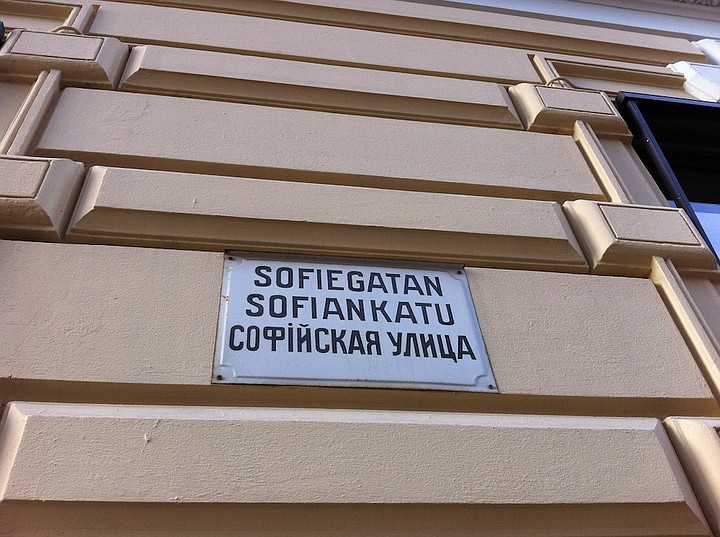
Helsinki, Finland, is considered by many to be the “gateway to the East,” dividing Scandinavia from Eastern Europe. Indeed, it spent time as both as part of the Kingdom of Sweden and as part of the Russian Empire. To this day, vestiges of both are seen in the country’s customs, street names (left) and cuisine. Of course, Finland has its own unique culture, too.
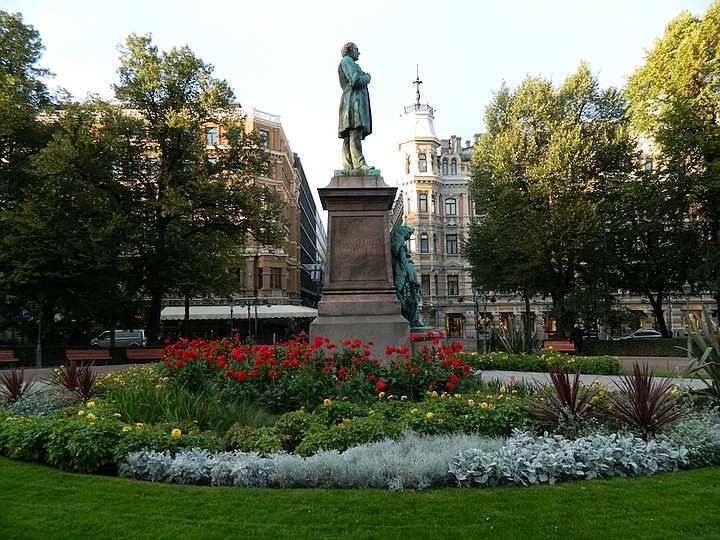
Interestingly, Finns see themselves as shy, reticent, with a touch of being dark and foreboding. In reality, they’re friendly, their dark-dressed rock stars aren’t particularly angry, and they certainly aren’t shy around a sauna!
Where to stay. GLO Hotel Kluuvi is a couple of doors down from the city’s grande-dame hotel, Hotel Kamp. GLO Hotel Kluuvi is like a hip, more laid-back younger sister to Hotel Kamp, though Mick Jagger stays at Kamp. Maybe he’s feeling his age!
GLO Hotel GLO Kluuvi has a fantastic location: in one direction is the port and the Esplanade, referred to as the Champs-Élysées of Finland for its luxe shopping and restaurants. In the other direction is the city’s convenient tram system and Stockmann, the grand city department store. Across the pedestrian path is Fazer, one of the nicest chocolate cafés in the world!
What to eat. Dating from 1891, Fazer makes chocolates and sweets, selling them in gift boxes and serving them (as well as tasty savories). Don’t faint at the prices – roughly double those in the U.S. The quality, in this author's opinion, is worth it. They serve many kinds of hot chocolate, including one with liqueur. I ordered the non-alcoholic Karl Fazer special chocolate. It was served on a tray with crushed mint candies, hot milk, whipped cream, cinnamon, cardamom and cocoa. So divine!
They have a location atop Stockmann (the classic city department store) with free WiFi, too. Just don’t get too dreamy at seeing Fazer goodies at the airport’s duty-free shop. I got so sidetracked, I mislaid my passport for a half hour!
Restaurant Olo is on the harbor, with a well-deserved Michelin star. Arctic berries, wild game, freshly caught fish are given new life with outside-the-box preparation and presentation. Dinner's in a leisurely tasting menu format, with your choice of the number of courses you’d like to eat.
Juuri is a non-touristy, casual neighborhood place with inventive dishes and cocktails – unusual for European restaurants, as they normally focus on beer and wines. Local, organic ingredients are used and beef is butchered in-house, resulting in lots of interesting cuts for recipes.
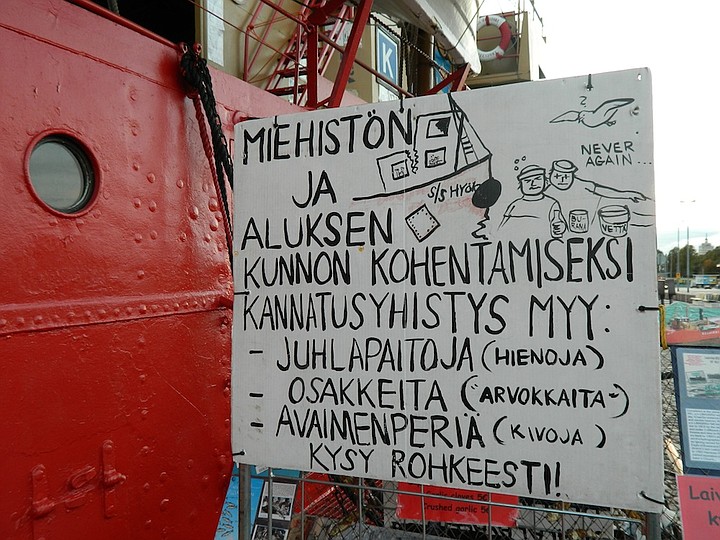
Helsinki is definitely embracing craft cocktails more than other locales in Europe. A21 makes drinks to order from fresh, exotic ingredients sourced around the world. Exotic and unusual does translate into super-pricey, though... about twice what cocktails in the U.S. cost.
Bryggeri is on a street with lots of Cyrillic still carved into building cornerstones. Its brewery brews several beers in the German style, serving them with the respect – proper glasses, temperature, etc. – that Europeans demand. Their gift shop not only sells t-shirts, but various canned fish!
What to do. After eating wild Finnish ingredients in all kinds of dishes, you might like to learn about where they come from and also get a bit of exercise! Chef Sami Tallberg conducts foraging classes in the city and then helps cook a gourmet meal from your pickings.
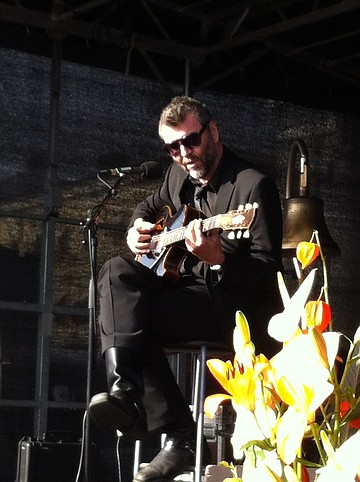
I happened to be in town for the Baltic Herring Fest at the harbor. It attracts all kinds of people: traditionalists, hipsters, locals, tourists. You can find herring fishermen selling their products in many formats, along with accompaniments and handcrafted goods. There's also live music and an even livelier atmosphere. I feel like they need a mascot in the future, a "Mr. Herring" to walk around and take pictures with visitors.
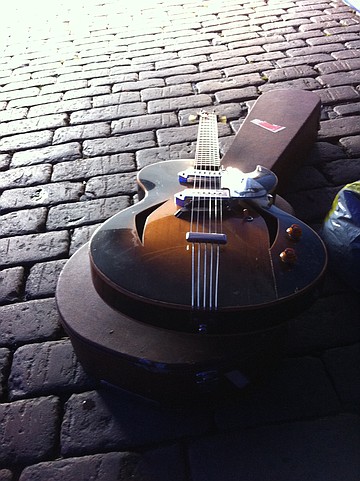
As part of the fest, I got to meet Boomer Finnish rock star Kauko Röyhkä. He looks like a punk version of Gene Simmons, but smack-talked him – setting off a little Twitter thing with the KISS frontman. His music can be more accurately described as “psychobilly.” Finnish ladies of a certain age go crazy for him.
The Helsinki Music Center (“Musiikkitalo”) is a performance venue with several components, able to host live shows of many sorts: dance, symphonic, chamber music, folk, pop, etc. Its modern design was controversial to Finns when first built. The center is right on the local tram paths.
A long-held Finnish tradition actually comes to them by way of the Russians who used to rule: the sauna. Saunas are ubiquitous in Finland; a recent survey says that 90% of Finns use a sauna at least once a week. But what were they like in ancient times?
Kaurilan Sauna is deep in the woods of a luxe suburban subdivision, but the 19th-century building was moved there from the country. Kaurilan Sauna is just the way things were over 100 years ago... without electricity, wood-heated. By firelight and candlelight, with towels made by the owner, you're transported back in time. In the sauna, after soaking in as much heat as you can – and then some – you sponge off with a combination of hot and cold water. In the winter, people will run around the outside of the building completely starkers in the snow, come in, and then start all over again.



Helsinki, Finland, is considered by many to be the “gateway to the East,” dividing Scandinavia from Eastern Europe. Indeed, it spent time as both as part of the Kingdom of Sweden and as part of the Russian Empire. To this day, vestiges of both are seen in the country’s customs, street names (left) and cuisine. Of course, Finland has its own unique culture, too.

Interestingly, Finns see themselves as shy, reticent, with a touch of being dark and foreboding. In reality, they’re friendly, their dark-dressed rock stars aren’t particularly angry, and they certainly aren’t shy around a sauna!
Where to stay. GLO Hotel Kluuvi is a couple of doors down from the city’s grande-dame hotel, Hotel Kamp. GLO Hotel Kluuvi is like a hip, more laid-back younger sister to Hotel Kamp, though Mick Jagger stays at Kamp. Maybe he’s feeling his age!
GLO Hotel GLO Kluuvi has a fantastic location: in one direction is the port and the Esplanade, referred to as the Champs-Élysées of Finland for its luxe shopping and restaurants. In the other direction is the city’s convenient tram system and Stockmann, the grand city department store. Across the pedestrian path is Fazer, one of the nicest chocolate cafés in the world!
What to eat. Dating from 1891, Fazer makes chocolates and sweets, selling them in gift boxes and serving them (as well as tasty savories). Don’t faint at the prices – roughly double those in the U.S. The quality, in this author's opinion, is worth it. They serve many kinds of hot chocolate, including one with liqueur. I ordered the non-alcoholic Karl Fazer special chocolate. It was served on a tray with crushed mint candies, hot milk, whipped cream, cinnamon, cardamom and cocoa. So divine!
They have a location atop Stockmann (the classic city department store) with free WiFi, too. Just don’t get too dreamy at seeing Fazer goodies at the airport’s duty-free shop. I got so sidetracked, I mislaid my passport for a half hour!
Restaurant Olo is on the harbor, with a well-deserved Michelin star. Arctic berries, wild game, freshly caught fish are given new life with outside-the-box preparation and presentation. Dinner's in a leisurely tasting menu format, with your choice of the number of courses you’d like to eat.
Juuri is a non-touristy, casual neighborhood place with inventive dishes and cocktails – unusual for European restaurants, as they normally focus on beer and wines. Local, organic ingredients are used and beef is butchered in-house, resulting in lots of interesting cuts for recipes.

Helsinki is definitely embracing craft cocktails more than other locales in Europe. A21 makes drinks to order from fresh, exotic ingredients sourced around the world. Exotic and unusual does translate into super-pricey, though... about twice what cocktails in the U.S. cost.
Bryggeri is on a street with lots of Cyrillic still carved into building cornerstones. Its brewery brews several beers in the German style, serving them with the respect – proper glasses, temperature, etc. – that Europeans demand. Their gift shop not only sells t-shirts, but various canned fish!
What to do. After eating wild Finnish ingredients in all kinds of dishes, you might like to learn about where they come from and also get a bit of exercise! Chef Sami Tallberg conducts foraging classes in the city and then helps cook a gourmet meal from your pickings.

I happened to be in town for the Baltic Herring Fest at the harbor. It attracts all kinds of people: traditionalists, hipsters, locals, tourists. You can find herring fishermen selling their products in many formats, along with accompaniments and handcrafted goods. There's also live music and an even livelier atmosphere. I feel like they need a mascot in the future, a "Mr. Herring" to walk around and take pictures with visitors.

As part of the fest, I got to meet Boomer Finnish rock star Kauko Röyhkä. He looks like a punk version of Gene Simmons, but smack-talked him – setting off a little Twitter thing with the KISS frontman. His music can be more accurately described as “psychobilly.” Finnish ladies of a certain age go crazy for him.
The Helsinki Music Center (“Musiikkitalo”) is a performance venue with several components, able to host live shows of many sorts: dance, symphonic, chamber music, folk, pop, etc. Its modern design was controversial to Finns when first built. The center is right on the local tram paths.
A long-held Finnish tradition actually comes to them by way of the Russians who used to rule: the sauna. Saunas are ubiquitous in Finland; a recent survey says that 90% of Finns use a sauna at least once a week. But what were they like in ancient times?
Kaurilan Sauna is deep in the woods of a luxe suburban subdivision, but the 19th-century building was moved there from the country. Kaurilan Sauna is just the way things were over 100 years ago... without electricity, wood-heated. By firelight and candlelight, with towels made by the owner, you're transported back in time. In the sauna, after soaking in as much heat as you can – and then some – you sponge off with a combination of hot and cold water. In the winter, people will run around the outside of the building completely starkers in the snow, come in, and then start all over again.
Comments